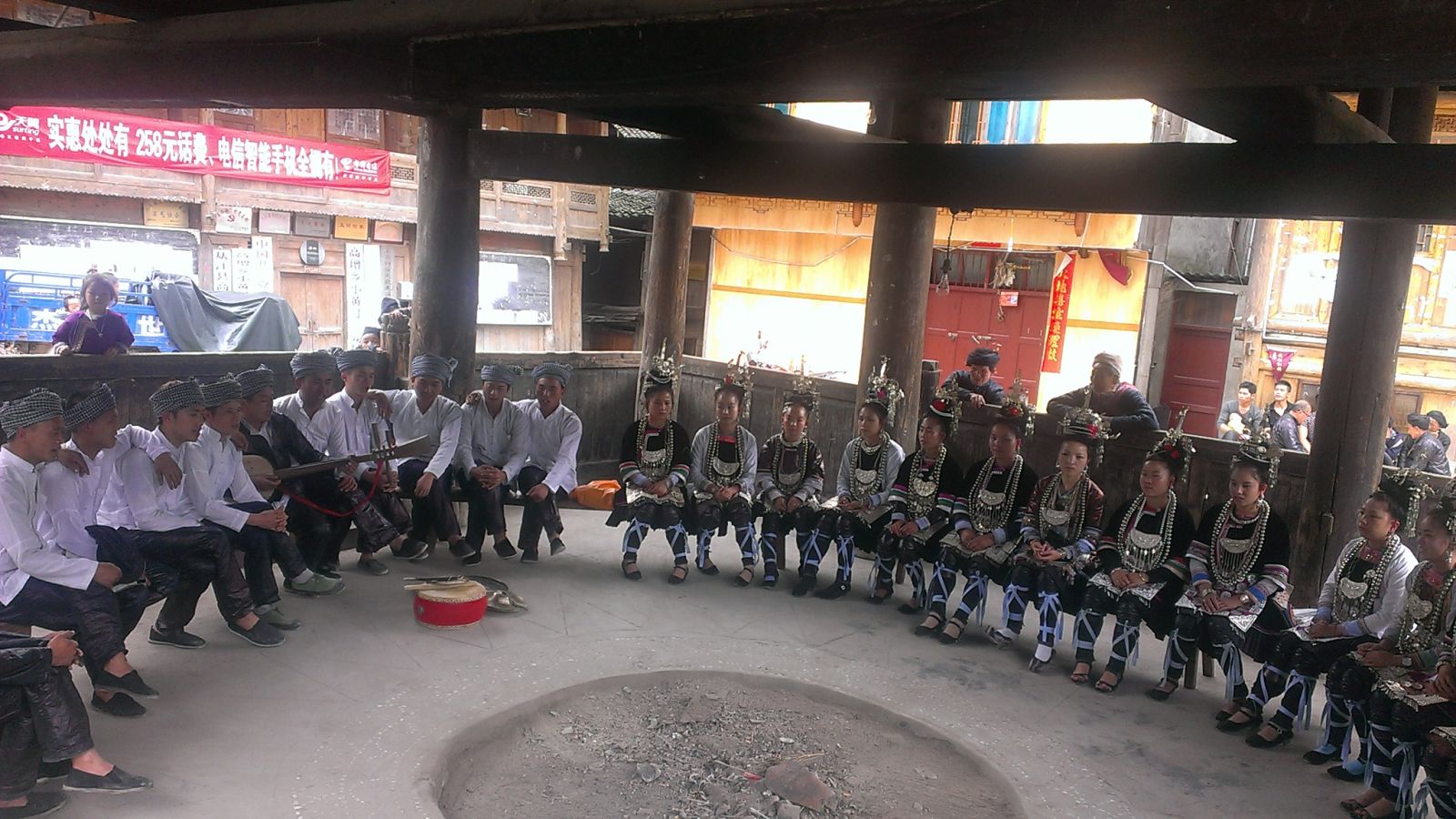- Guiyang
- Huaxi National Wetland Park
- Jiaxiu tower
- Qianling Mountain Park
- Qingyan Ancient Town
- Baihua Lake

 |
 |
 |
 |
|
Qingyan Ancient Town
A masculine town of bluestone, Qingyan originated from a military station on courier route. To govern the southwestern frontier, the Ming Dynasty installed Guizhou Military Commission in 1373, which controlled the courier routes to Sichuan, Yunnan, Hunan and Guangxi. Because of its location in the middle section of the route from Guangxi to Guiyang, the pu (office in charge of official correspondences), the tang (office in charge of military intelligence) and a military station at Mount Shuangshi were established in Qingyan, which had been called Qingyantun (Qingyan Military Station). In 1381, the army of 300 thousand soldiers sent by Emperor Zhu Yuanzhang to Yunnan and Guizhou stationed and reclaimed land here. As a result, Qingyantun, the military station evolved into Qingyanpu, a town settled by both the army and civilians. In the several hundred years afterwards, through construction and expansion, the original town built of earth developed into a town of stone walls and stone streets.
The magnificent Dingguangmen Gate Tower and the mottled relics of the ancient wall remind us of the glorious history of the ancient town as an important military station. Walking in the streets of the town of blue stone, we can see the strong structure of the town composed of slabs, stone walls, stone columns, stone tiles, stone wells and boulders for paving the streets, all of which are of blue stones. The blue stones give the town a charm of antiquity. Walking in the small ancient town about 3 square kilometers, we tend to be lost in its ancient history because of the crisscrossing stone lanes.
Qingyan is an inclusive town with followers of Buddhism, Taoism, Christianity and Catholicism, who live in peach with each other. Because of the blessings from these religions, many ancient buildings of the Ming and Qing Dynasties are well preserved in the town. The town is dotted with 37 ancient buildings.
Visitors give new life to Qingyan, which still preserves its ancient charm. If you come to Qingyan for the first, just walk along the main street according to the signs on both sides, you will not miss the story of Zhuangyuanfu (the Number Scholar’s Residence), the wood sculptures of Longevity Palace, the stone sculptures of Ciyun Temple, and the pilgrims of Yingxiang Temple. You can taste the appetizing local specialties, such as Qingyan Stewed Pig Trotters, Rose Sugar Seasoned Smoked Pork and the fresh mountain products; you can also linger around the stone or wood counters of the wine shops, teahouses, antiques shops and variety stores, which remind you of the antiquity of the town.
The Dingguanmen Gate and the ancient stone walls were built with boulders on cliffs, adding magnificent features of mountain fort to the town. Of the four gates of the ancient town, only the Dingguangmen Gate, the south gate built in the Qing Dynasty, exists today. The gate got its name, Dingguangmen, because it is the beginning of the route to Dingfan and Guangshun. Around the gate, there still remains the wall, the watchtowers, the crenels and the battery, all built with cube boulders. The government of Qingyan has restored the broken sections of the south ancient wall, among which only the Dingguangmen Gate section still retains the old wall built in the Ming and Qing Dynasties. |
 |
||
 |
|||
 |
|||
 |
|||







